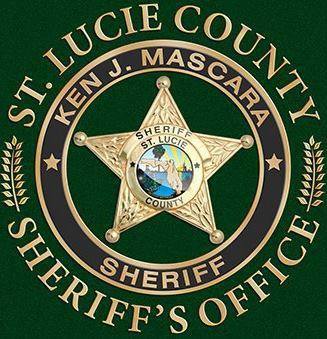Title Page
-
Site conducted
-
Conducted on
-
Prepared by
-
Location
NEIGHBORHOOD AROUND CHURCH
-
Are there “crime generators” in the immediate neighborhoods of the church? “Crime generators” may include late-night social or retail establishments, low income housing, social services, etc.<br>
-
Can the church be observed from surrounding facilities and streets? It is preferable for there to be clear lines of sight between church’s and their neighbors.<br>
-
Are neighborhood streets and walkways in the immediate vicinity to the church well lite?<br>
-
Do nearby residents use church property for recreational purposes? Persons who are not members of the church and use the property for<br>recreation may become a security risk or threat.<br>
-
Is the church located in a neighborhood that has an active Neighborhood Watch program? A neighborhood that has an active Neighborhood Watch program is often safer than one that does not.<br>
PROPERTY PERIMETER
-
Are property boundaries of the church easily recognizable by visual means?<br>
-
Are there signs near the property perimeter directing visitors to appropriate locations for building entry?<br>
-
Is the church building and grounds visibly accessible to patrolling law enforcement vehicles?<br>
-
Are designated parking lots or parking areas well lighted? Surface parking areas should have at least one foot candle light level during periods of darkness.<br>
-
Are pedestrian walkways and building entrances particularly well lighted? It is recommended that pedestrian walkways and building entrances have at least five foot candle light level during periods of darkness<br>
-
Are all sides of the church illuminated by exterior lighting?
-
Are exterior lights associated with the church controlled by a photoelectric cell? It is preferable to have exterior lighting controlled by light sensitive photoelectric cells rather than manual switches or timers.<br>
-
Does someone have the responsibility for checking the operation of all exterior lighting at least once a week? It is recommended there be a<br>formal process for inspecting all external lighting on a regular scheduled basis.<br>
-
Is there a reliable system or process for the timely repair of inoperative external lighting? Inoperative exterior lighting should be repaired as soon as possible after being identified.<br>
-
Is exterior lighting uniform, without pockets of shadow or glare?
-
Are switches, breakers or electrical panels that control lighting inaccessible to the public?<br>
-
Are exterior playgrounds enclosed by a sturdy fence?
-
Do external playgrounds have a restricted entry point?
-
Are sight lines from the church to playgrounds unobstructed by landscaping, plant growth or other means?<br>
-
Does playground equipment have tamper-proof fasteners?
-
Are bushes, shrubbery or other plant growth trimmed in an appropriate manner so as not to serve as a hiding place or a place of concealment? It is recommended that plant growth within six foot of a parking facility, pedestrian walkway or building entrance be trimmed at a height of no more than two feet (2’). The branches or foliage of trees should be no lower than seven feet (7’) above grade.<br>
-
Are there any informal pathways (not formally designated) that may serve as a security risk, i.e., inadequately lit?<br>
-
Are exterior or detached storage buildings or facilities well-constructed and secured?<br>
-
Are dumpster covers locked and is the trash or dumpster area well lit?
-
Are there any exterior building recesses or alcoves that can serve as hiding places or places of concealment for intruders? Means to remove or reduce concealment potential may include lighting, screening, blocking, convex mirrors, etc.<br>
BULIDING PERIMETER
-
Are visitor entry points clearly identified?
-
Is the church designed in such a manner that visitors have to check in at an administrative office or desk before they can access other parts of the building?<br>
-
Is the designated visitor entry point under the visual supervision of a<br>receptionist or administrative office?<br>
-
Is there a strategy or program to detect and eliminate propped exterior doors at the church?<br>
-
Has the exterior handles and door trim been removed from emergency exit doors?<br>
-
Are perimeter pedestrian entryways equipped with full flush metal or solid core doors at least 1 ¾” thick and secured with deadbolt locking devices (where life safety codes do not govern otherwise) and door hinges that do not permit the pins to be removed from the exterior?<br>
-
Are exterior doors not used as designated entry points locked to prevent entry from the exterior?<br>
-
Are the locks on all building entry points functional and in a good state of repair?<br>
-
Are exit doors equipped with push-pads rather than push-bars that may be more easily opened with a coat hanger?<br>
-
Are operable exterior windows easily locked?
-
Is there a clear responsibility for unlocking and locking the church each day?<br>
ELECTRONIC INTRUSION DETECTION SYSTEM
-
Does the church have an electronic intrusion detection system (“burglar alarm”)?<br>
-
Does the alarm system cover all exterior entry points?
-
Are there clear signs and/or decals posted on the exterior of the building (doors and windows) indicating the facility is equipped with an intrusion detection system? The primary goal of an alarm system should be to deter by its presence and prevent illegal entry attempts.<br>
-
Is the intrusion detection system centrally monitored? It is recommended that an electronic intrusion detection system be equipped with both a loud local annunciator and be monitored centrally by an alarm monitoring center.<br>
-
Is there a preventive maintenance program for the intrusion detection alarm system? Intrusion detection systems should be inspected and<br>serviced at least annually by a trained and certified technician.<br>
VIDEO SURVEILLANCE SYSTEM
-
Does the property currently have a video surveillance system (CCTV cameras)?<br>
-
If the property currently has a video surveillance system, is it used to view vehicle parking areas or playground areas?<br>
-
If the property have a video surveillance system, is it used to monitor perimeter access control?<br>
-
If the property does currently have a video surveillance system, is it used to view internal areas of the building?<br>
-
Are there doors or other means to secure sections of the church when the section is not in use?<br>
KEY MANAGEMENT AND CONTROL
-
Is there a single person responsible for key issuance and record keeping?
-
Is there an accurate record of who has been issued church keys?
-
Is key duplication, prohibited except for authorized personnel?
-
Are key holders required to sign for keys?
-
Are keys stored in a locked container with limited access?
-
Are affected locks replaced or rekeyed whenever a key is lost or stolen?
CHRUCH PROPERTY INVENTORY
-
Is the responsibility for church property inventory assigned to a specific staff member?<br>
-
Is valuable church property engraved with an owner applied number in a manner that permits easy identification?<br><br>
-
Is there a written (preferably computerized) inventory of all church property and equipment of value?<br>
CHILDREN AND YOUTH SECURITY
-
Is there a written, up-to-date Child and Student Safety and Protection Policy?<br>
-
Is there a child and youth security training program for church employees and volunteers?<br>
-
Is there a church policy that requires a background check of staff and volunteers?<br>
-
Are fingerprints taken of all church employees?
-
Is there a policy that requires volunteers to be a member of the church or active in church activities for at least six months before they can be<br>directly involved in children and youth activities?<br>
-
Are there uncovered windows in classrooms and youth activity areas?
-
Is there a policy that requires that two or more adults be present during church sponsored programs involving children and youth?<br>
FINANCIAL SECURITY
-
Is there a written, up-to-date accounting procedure manual that identifies how church money and financial resources are handled, counted,<br>deposited, reported and audited?<br>
-
For the counting of church offerings, is there a policy that requires at least three people to be present and that these people are rotated on a regular basis?<br>
-
Is there a church policy that no one person has the authority to approve purchases, issue funds and sign checks?<br>
GENERAL CONSIDERATION/ ACTIVE SHOOTER
-
Do you have a safety team that can take charge during any emergency situation?<br>
-
Are Code Red Drill conducted?
-
Have team members undergone a thorough screening, including a criminal background check?<br>
-
Are team members trained to handle communication, evacuation, first aid, emergency response, and violent intruder?<br>
-
Has your team discussed worst-case scenarios and developed responses to them?<br>
-
Has your team consulted area experts, such as police, paramedics, and firefighters, to determine how your organizations can work best with one another?<br>
-
Is your team trained to help evacuate the church?
-
Does your team practice evacuation on a regular basis with staff, volunteers, and members?<br>
-
Is your team trained to verbally deescalate a disruptive person(s)?
-
Is your team trained in Use of Force and Control Techniques (Unarmed Self-Defense)?<br>
-
Does your emergency response plan address the possibility of violent attacks?<br>
-
Has your safety team determined which areas of your ministry are most vulnerable to attack?<br>
-
Does your team know how to prepare for and respond to a violent attack?
-
Can your team implement lockdown procedures in the event of a violent event within the church?<br>
-
Does your ministry have security cameras, panic buttons, silent alarms, or other types of security equipment to help ensure the safety of your<br>members?<br>
CHURCH SECURITY TEAM
-
Are armed security personnel current or former law enforcement agents?
-
Are they licensed to carry a weapon in your state?
-
Do you require team members who carry firearms to receive regular, formal weapons training?<br>
-
How often do they undergo weapons training?
-
Do your security team members follow a set of written guidelines as to how much force may be used against a person in a given situation?<br>
School Campus Assessment
-
The name of the school building clearly marks the front entrance
-
Grade Level
Facilities & Gounds
-
School grounds fenced
-
Fence gates are in good repair and capable of being locked
-
Fencing is in good repair with no holes or gaps
-
Fencing surrounds the entire campus
-
There is one clearly marked designated entrance for visitors
-
Classrooms and offices have their room numbers posted on the exterior of the building
-
Trees and shrubs are trimmed. (No shrubbery above 2’/ No branches below 8’)
Building Exterior
-
Access to bus loading areas are restricted to other traffic during loading/unloading
-
Courtyards and commons area are supervised & doors are locked during non-use times
-
All exterior windows are in good repair and can be locked/secured
-
There is an access control system and/or procedure for the main buildings
-
The play areas have clearly defined boundaries and are protected with fencing
-
All classrooms; other rooms are locked when not in use
VIDEO SURVEILLANCE SYSTEM
-
Cameras cover the inside hallways
-
Cameras are strategically placed around the perimeter of the campus and building
-
The camera monitors are in secure locations with limited access
-
The cameras can be recorded in either a VHS or digital format
-
The main entrances
-
Someone is assigned to observe the monitors
Crisis Planning
-
There is a formal incident reporting system for students & staff
-
There is a formal threat assessment process
-
Evacuation/fire drill
-
Lockdown
-
Key personnel have 2 way radio communication
-
Code Red / Lockdown Notification








